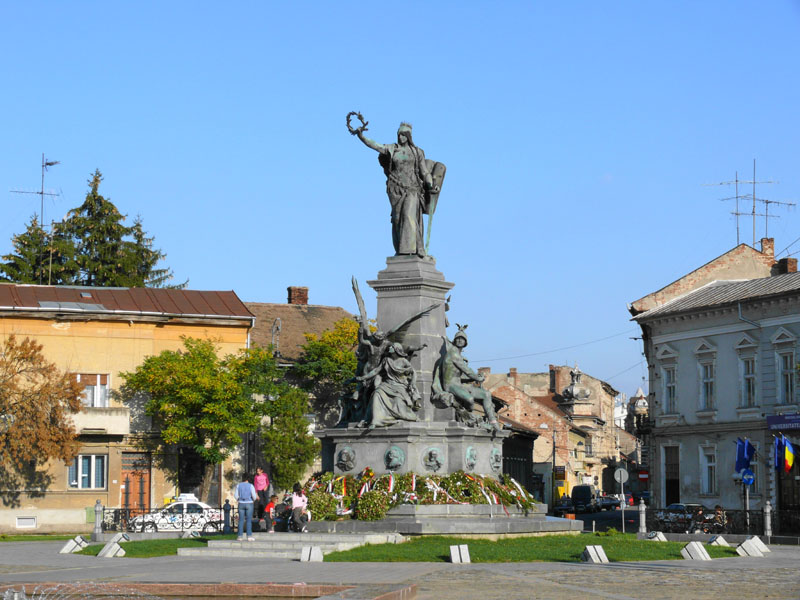The approach of the last one and a half to two decades, the political activities of the Hungarian interest protection organization - strengthened by the Budapest "tailwind" - and the recovery of the Hungarian civil sphere brought relief, and they no longer try to deny or hide the contribution of Hungarians to the development of Arad in the 19th century.
Several Hungarian-related public sculptures, demolished in the 1920s and '30s, were recently returned to the Hungarian community in Arad. The works of art - some of which were already thought to be lost - have been placed in the courtyards of churches or educational institutions, or will be placed in the near future, but there are also some that would be put up again in public space (even if not in their original place). The re-erection of the Statue of Liberty twenty years ago broke through the wall of rejection, and now the local Romanian cultural policy is more accepting of the Hungarian cultural-historical heritage in Arad, kronikaonline.ro reports.
The change of power was an "inherent" part of the Trianon peace decree that ended the First World War, and
in the 1920s and 1930s, the new Romanian administration systematically liquidated works reminiscent of the Hungarian past, be they statues, paintings, or other memorials.
They tried to erase from the public memory those famous personalities to whom the city owed a lot in terms of architecture, society or infrastructure development. The statues erected in their honor were at first only boarded up, then demolished, the dismantled pedestals and works of art were banished to the depths of warehouses, some of them disappeared, others were thought to be lost for a long time.
The coming of age of the last one and a half to two decades, the political activity of the Hungarian interest protection organization - strengthened by a "tailwind" from Budapest, the recovery of the Hungarian civil sphere, the emphasis on the universal value of rare works of art
brought relief, and they no longer try to deny or hide the contribution of Hungarians to the development of Arad in the 19th century.

The statue of József Pecsovszky was inaugurated in the presence of his grandson living in Germany • Photo: Zsolt Lehel Pataky / Krónikaonline.ro
In September of last year, András Andó, the communications director of the Arad county municipality, shared on his social media page that the bust of the late Arad chief physician János Darányi would be restored within the foreseeable future. With the approval of the management of the Arad County Museum and the county council that maintains the public collection, the bust, which was believed to be missing for decades, was brought out of the museum's warehouses at the initiative of Tamás Péró, a representative of the county government from the RMDSZ, together with the original statues of Gergely Csiky and Gábor Fábián, which were also believed to be lost. with the aim of making them public again after restoration.

Arad Freedom Statue / Photo: Wikipedia
The beginning of the "relief" was the restoration of the Statue of Liberty to the public square in Arad in 2004. It is well known that the work, originally erected on October 6, 1890, was dismantled in 1925, the elements of the composition were kept in the warehouses of the theater and then in the Arad Castle, from where they were brought out in 1999 thanks to a Romanian-Hungarian intergovernmental agreement. Five years later there was an opportunity to inaugurate it - if not in its original location, on Szabadság tér, but on the former Attila tér - which made the dream of the Hungarian community in Arad come true for more than seven decades, as the memorial to the 13 martyred generals executed in Arad in 1849, György Zala's monumental work is the symbol of the local Hungarian community's aspirations for freedom and self-determination.
The full article HERE .
Cover image: Aradi Freedom Statue, Hungária figure / Photo: Wikipedia













